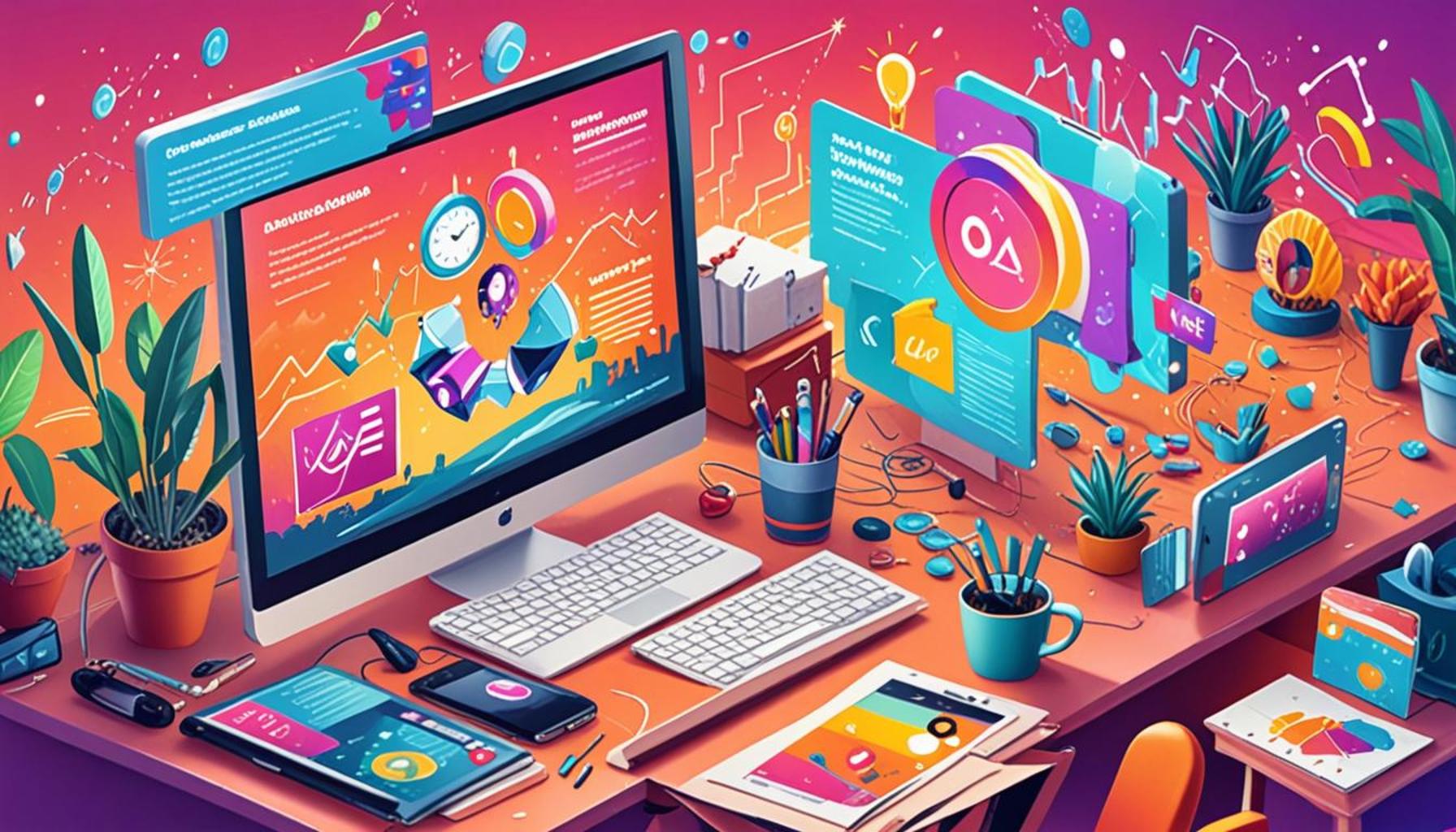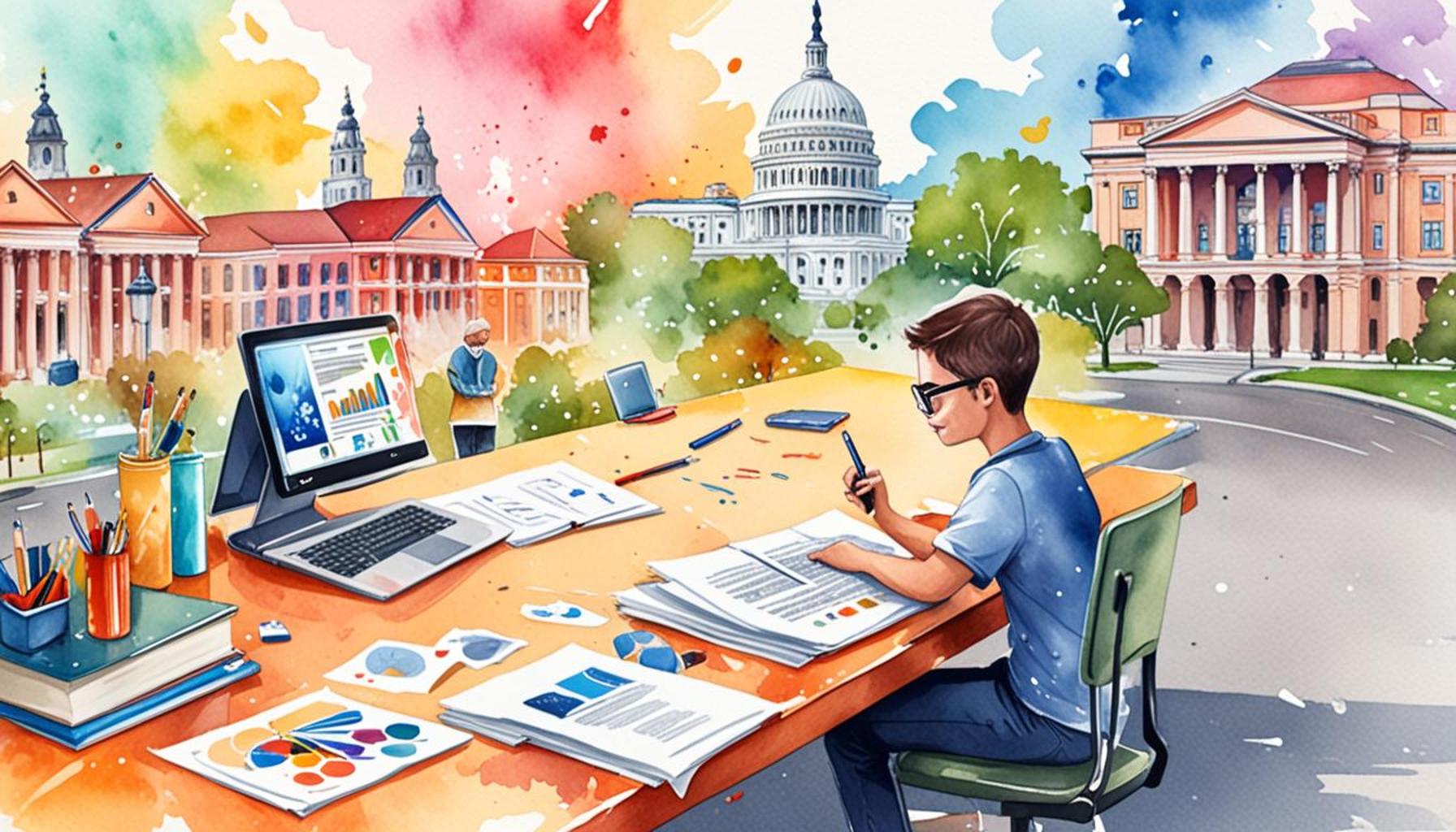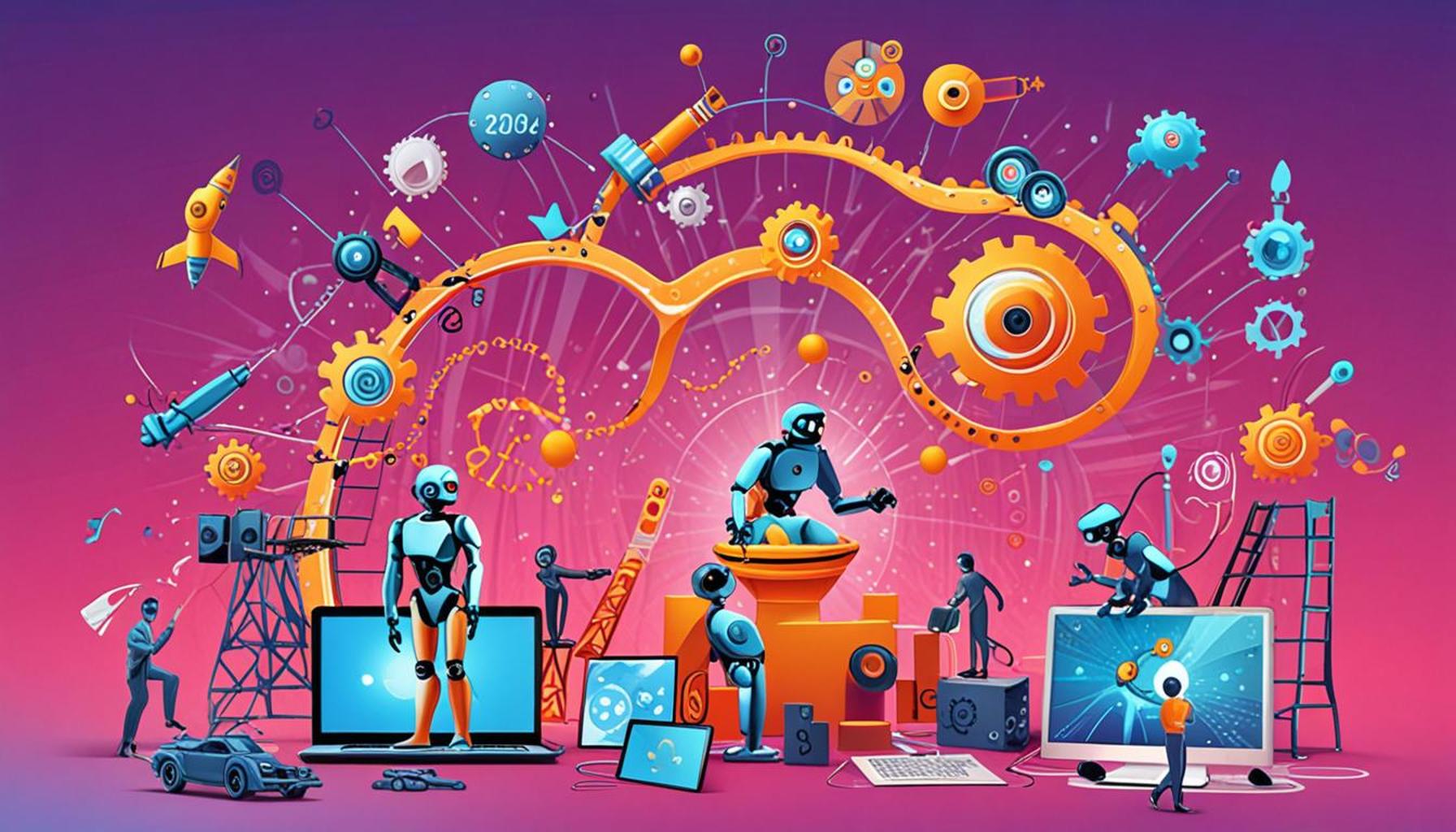Case Study: Success of Public Benefit Campaigns Through Marketing Automation

Understanding the Impact of Marketing Automation
In a world where digital engagement defines success, marketing automation has emerged as a powerful tool for public benefit campaigns. Organizations leverage advanced technologies to streamline their processes, enhance outreach, and ultimately drive tangible results. By automating various elements of the marketing workflow, these initiatives can not only reduce operational costs but also expand their reach to broader audiences more effectively.
The Transformation of Public Benefit Campaigns
Many campaigns have transformed their strategies by adopting marketing automation, yielding impressive outcomes. This evolution allows organizations to react swiftly to changing circumstances and participant needs, making their processes more responsive. Consider the following:
- Increased Efficiency: Automating repetitive tasks allows organizations to focus on impactful activities. For instance, automating email responses can free up staff time and direct focus towards core mission activities, such as community engagement and strategic planning.
- Targeted Messaging: Personalized communications boost engagement and conversion rates. By analyzing past donor behavior and preferences, organizations can tailor messages that resonate personally, increasing the likelihood of donations or volunteerism. A report from the Direct Marketing Association found that targeted emails can improve conversion rates by up to 200% compared to generic messaging.
- Data-Driven Decisions: Advanced analytics provide insights that guide marketing strategies. Detailed tracking of campaign performance metrics allows organizations to refine their approaches effectively. For instance, platforms like Google Analytics or HubSpot can uncover trends in user engagement, helping organizations pivot when necessary to maximize impact and efficiency.
Real-World Examples
Several organizations have redefined their outreach using marketing automation. Notable successes include:
- Charity Water: This nonprofit organization provides accessible clean drinking water to developing countries. By utilizing automation, they enhanced donor engagement significantly, employing personalized messaging and segmented email campaigns that have reportedly resulted in a higher repeat donation rate.
- The American Red Cross: Faced with the immense task of coordinating volunteers during crises, the Red Cross streamlined their communication through automated messaging systems. This approach not only improved volunteer mobilization but also ensured that critical updates reached the right people at the right time, significantly boosting operational efficiency during emergency responses.
This article delves into these case studies, showcasing how marketing automation serves as a catalyst for public benefit campaigns. As organizations continue to harness technology, opportunities for innovation abound. Discover how leveraging marketing automation can empower initiatives aiming for social good, while maximizing their impact and fostering community support. Moving forward, the integration of technology in nonprofit strategies may not only enhance outreach but inspire future movements towards sustainable change across various societal issues.
ADDITIONAL INSIGHTS: Expand your understanding here
Harnessing Marketing Automation for Public Benefit
The evolution of public benefit campaigns has been significantly shaped by the integration of marketing automation. As organizations strive to maximize their impact, the adoption of tailored marketing strategies and automated systems provides a solid foundation for success. The shift to a more data-driven approach allows these campaigns to efficiently engage audiences while honing their focus on critical issues.
The Power of Automation in Driving Engagement
With marketing automation, public benefit campaigns can improve communication and outreach efforts in ways that were previously unimaginable. This technology enables organizations to create meaningful interactions with supporters, volunteers, and the communities they serve. Some key advantages include:
- Seamless Lead Generation: Automation tools help track and nurture leads more effectively, ensuring that potential donors are not lost in the shuffle. By employing landing pages and tailored forms, organizations can attract supporters and collect pertinent data that informs future engagements.
- Consistent Communication: Regular engagement with audiences is vital for maintaining momentum in public benefit campaigns. Automated systems can schedule posts across various platforms, ensuring that organizations communicate their message consistently and frequently without overwhelming their teams.
- Improved Return on Investment (ROI): By streamlining operations and reducing personnel resources needed for repetitive tasks, organizations can allocate more funding towards directly benefiting their missions. A report from the SalesForce Nonprofit Trends shows that organizations utilizing automation experienced a 25% increase in their campaign outcomes, maximizing every dollar spent.
Case Studies: Leveraging Automation for Impact
Several inspiring case studies illustrate the transformative potential of marketing automation in public benefit campaigns:
- ASPCA (American Society for the Prevention of Cruelty to Animals): This organization has successfully utilized marketing automation to improve donor engagement. By employing targeted campaigns based on donor behavior and previous interactions, they have increased their donor retention by an impressive 27% in just one year, showcasing the value of personalized communication.
- Feeding America: As a nationwide network of food banks, Feeding America embraced automation to scale its messaging during crises, such as the COVID-19 pandemic. Automating their email outreach allowed them to quickly mobilize supporters around food drives, resulting in a 40% increase in donations during peak periods of need.
These examples not only underscore the benefits of marketing automation but also illuminate a path for other organizations seeking to enhance their outreach strategies. By tapping into the power of technology, public benefit campaigns can not only expand their reach but create more significant societal impacts. As the narrative of nonprofit initiatives continues to evolve, the incorporation of automation remains a key driver in achieving meaningful change amidst the complexities of modern-day challenges.
| Advantage Type | Description |
|---|---|
| Enhanced Engagement | Automated campaigns cultivate deeper connections with audiences, resulting in enhanced support for public benefit initiatives. |
| Cost-Effective Outreach | Utilizing marketing automation streamlines communications, significantly reducing costs associated with traditional marketing channels. |
| Data-Driven Decision Making | By analyzing engagement metrics, organizations can make informed adjustments to their campaigns for maximum impact and efficiency. |
| Personalized Communication | Automated tools facilitate customized messaging that resonates with diverse audience segments, hence boosting conversion rates. |
In the realm of public benefit campaigns, these advantages provided by marketing automation have proven to be pivotal in ensuring program success. The shift towards data-centric strategies not only enhances visibility but also fosters lasting relationships, compelling stakeholders to engage actively. As more organizations leverage these automated solutions, the potential for impactful outreach continues to grow exponentially. Organizations embracing this strategic trend are setting themselves up for success, as they adapt to the demands of a rapidly evolving digital landscape. By capitalizing on the power of technology, public benefit campaigns can achieve greater reach and effectiveness, ultimately driving positive change in communities.
YOU MAY ALSO LIKE: Read read another article
Measuring Impact Through Data-Driven Decisions
Another crucial aspect of utilizing marketing automation in public benefit campaigns is the ability to derive actionable insights through data analytics. Understanding the effectiveness of each campaign is essential for organizations striving to enhance their strategies. By leveraging data collected through automation tools, nonprofits can make informed decisions that significantly optimize their outreach and funding efforts. Some essential metrics and their implications include:
- Audience Segmentation: Automated systems can analyze supporter demographics and behaviors, enabling organizations to segment their audiences effectively. This segmentation ensures that messaging is tailored, which can lead to a higher rate of engagement. According to HubSpot, segmented campaigns have been shown to improve conversion rates by up to 202%.
- Email Open and Click-Through Rates: With automated email campaigns, nonprofits can track open and click-through rates in real time. Monitoring these metrics helps organizations refine their messaging and offers based on what resonates most with their audience. For example, a study by Campaign Monitor found that personalized emails deliver six times higher transaction rates, underscoring the significance of tailored communication.
- Return on Marketing Spend (RoMS): As organizations analyze the return on their marketing investments, automation allows them to attribute donations directly to specific campaigns. This clarity on RoMS can significantly guide future allocation of resources to the most effective outreach efforts.
Innovative Approaches to Fundraising
The success stories of public benefit campaigns through automation extend beyond engagement metrics. Innovative fundraising approaches enabled by automation are shaping new avenues for financial support. For instance, the World Wildlife Fund (WWF) harnessed marketing automation to implement recurring donation programs that allow supporters to contribute monthly. This strategy has led to substantial growth in their subscriber base and a steady influx of funds, critical for their long-term conservation projects.
Additionally, the integration of chatbots on nonprofit websites, powered by automation, can further drive donations. Organizations like charity: water use chatbots to engage visitors, answer queries, and guide them through the donation process seamlessly. As reported in the 2021 Nonprofit Leadership Report, adopting chatbot technology has resulted in an average increase of 14% in fundraising efforts, proving that real-time engagement can significantly enhance donor relations.
Adopting Future Technologies
Looking ahead, the future of public benefit campaigns within the realm of marketing automation is poised for further innovation. Emerging technologies such as artificial intelligence (AI) and machine learning are set to revolutionize how organizations connect with supporters. For instance, predictive analytics can help forecast donation patterns based on historical data, allowing nonprofits to preemptively strategize their outreach efforts during critical giving seasons.
The integration of social media monitoring tools is another avenue where automation can advance campaign effectiveness. By tracking sentiment analysis and audience feedback in real-time, organizations can adapt their campaigns dynamically, tailoring messages that resonate most with their stakeholders.
As we witness the profound advantages of marketing automation in public benefit campaigns, it becomes increasingly evident that the potential for impact is immeasurable. By marrying data-driven decision-making with innovative fundraising approaches and future technologies, organizations are setting the stage for sustainable growth and, ultimately, a more significant societal impact.
SEE ALSO: Click here to read another article
Conclusion: A New Era of Public Benefit Campaigns
In summary, the case study on the success of public benefit campaigns through marketing automation reveals a transformative landscape for nonprofits striving to make an impact. By harnessing the power of data analytics, organizations can optimize their outreach, refine their messaging, and ultimately foster deeper connections with their supporters. The ability to measure key metrics such as audience segmentation, email engagement rates, and return on marketing spend not only enhances campaign effectiveness but also informs strategic decisions that can lead to sustained growth.
Moreover, innovative fundraising approaches—such as recurring donation programs and chatbot integrations—illustrate the valuable opportunities brought forth by marketing automation. Nonprofits are not only enhancing donor relations but are redefining engagement by creating seamless experiences that attract and retain supporters. With emerging technologies like artificial intelligence and machine learning on the horizon, the potential for public benefit campaigns to evolve is vast. The future promises even greater capabilities in forecasting donor behavior and customizing outreach strategies.
As the landscape continues to change, it is imperative for organizations to adopt these innovative tools to ensure that they remain relevant and impactful in their missions. The successes highlighted in this study serve as a compelling reminder of the transformative power of marketing automation in driving positive social change. Now is the time for nonprofits to embrace these technologies, paving the way for a new era where every campaign is not only successful but also truly serves the greater good.


